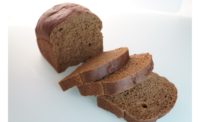![]()
Do You Own Property?
Licensed candy is an important piece of the confection
mix, but only when the property is a perfect fit with a particular candy.
Candy that comes with an
attached piece of property is a lot like the nursery rhyme girl with the
curl: When it is good, it is very, very good, but when it is bad, it is
horrid. So just like in real estate where location is everything, good
candy properties are defined by their candy location — or upon which
candy they sit. In fact, experts say retailers shouldn’t think about
it in terms of candy licensing, but rather licensing that’s applied
to candy effectively.
Caveat Emptor: Let the licensed buyer beware. If a
retailer doesn’t want to be caught holding the deed to the equivalent
of confection swampland — in other words, licensed candy that
“isn’t worth a dime” and will have to be greatly marked
down to be sold — it should be able to distinguish when a license is
just “slapped on” and when it’s a perfect candy fit.
Of course, the license itself must be hot to begin with
— especially when targeted to kids, the way most are in the candy
arena. Retailers shouldn’t hesitate to look at other departments that
carry successful licenses, including toys, apparel, and other consumables.
The next order of business is to determine if it is channel-appropriate.
Toy stores and specialty stores that are targeted to kids seem to do better
with classic evergreen licenses, whereas the mass market seems to do better
with movies licenses or characters from the latest in kid media.
Finally the license “marriage” (to the
candy or candy/toy) should make sense and seem very natural. Kids like
creativity and novelty, but not complexity. They need to “get
it” fairly quickly or it will be passed over for something else that
looks simpler, and thus, more fun.
Parents can’t be left out of the equation either. While the
main target of the category is kids right now, parents tend to respond really
well to candy novelties with licenses from when they were young. With the revival
of many characters and TV shows and movies that were extremely popular 10 to
20 years ago, parents are nostalgically sharing a licensed favorite that was
once theirs, now with their child. Price points here could go above the $2 mark,
since the parent is typically the purchaser, rather than the child with allowance
or spending money.
Long-term licensing agreements — with the same license property
— are now in the works with several major candy companies. Rather than having
the individual candy companies deal with one particular character line, as was
customary, they are joining together as one entity to focus on a comprehensive
program with the developed brand. This is expected to begin to change the face
of candy licenses as we know it, because rather than having licenses come and
go, as is the case with licenses that are attached to a particular movie with
a short life span, this program makes a whole war chest of properties available,
enabling more long-term programs with retailers. Wide-scale licensing initiatives
such as these will allow candy manufacturers, as a single entity, to develop
their own section at retail.
A look ahead
It seems that as the interactive market grows, so do
the possibilities of licensing. Therefore, a once old license can be given
new life and re-marketed. Industry observers expect that “everything
old will be new again” as licensing and confections stick better
together in the future. Nostalgic and retro themes will dominate the trends
— and adults are expected to literally buy into this category as it
expands into a higher level of sophistication and the gourmet candy
category.
On the kid’s side, the key will be to continue to develop new
and innovative concepts — especially at the retail merchandising level. Today’s
information-savvy kids are used to being targeted in a stimulating and ever-changing
way. They are raising the bar for how retailers should capture their dollars.
Licensed To Sell!
New licensed candy products are putting kids’ fantasies where
their mouths are — and the character innovation is more authentic than ever.
Here are a few of the latest mouth-watering must-haves for retailers.
Cap Candy has cooked up some "artifact treats" inspired by the
wizard sweet shop, Honeydukes, in the Harry Potter books. Cap Candy "wizards"
have conjured up this array of sweets timed to hit retail shelves just before
Warner Bros. Pictures releases the third Harry Potter film in June. The candy
line includes Harry Potter Acid Pops, Harry Potter Droobles Best Blowing Gum,
Harry Potter Ice Mice, Harry Potter Jelly Slugs, and Harry Potter Fizzing Whizbees,
ranging from 99 cents to $1.99.
Masterfoods has joined the world of licensed novelty candy,
giving even more credibility to the category. The giant candy company has launched
its Shrek 2 Display, combining plastic Shrek characters with king-size versions
of its popular candy treats: M&M plain, M&M peanuts and Skittles Original and
Sour flavor candies. The display holds 132 pieces, is die-cut in the Shrek character
shape, and bears a vibrant color –– green, of course.
Taste of Nature sticks with a good license when it knows it
has one. The company has recently taken licensed candy into seasonal with its
Care Bears Holiday and Care Bears Valentine’s Day gummi bears candies. "The
strategy is already paying off. We’ve seen excellent penetration and sell-through,"
says Scott Samet, spokesperson.
Imaginings 3/Flix is "custom-fitting candy to completely reinforce
the strength of the license," according to Dave Jupp, marketing director. "Slapping
a label on a bag of pressed dextrose shapes seems to not be enough these days,"
he adds. The company’s Nemo Sardine Can, filled with gummi fish, is a great
example of this trend. "Even though the movie’s life cycle seems to be done
and over, we are still getting reorders," says Jupp. The company has thus taken
the line generic — Squishy Fishes Gummy Candy.
Frankford has launched
Nick Candy Toon Pops, being supported by a comprehensive national TV, print
and online advertising campaign running through August. According to Kurt
Dungan, spokesperson, "In licensed candy, retailers are looking for
only ‘the best of the best.’ Faced with reduced SKU counts in
their programs, retailers find it more effective to take a position on only
the most popular licenses like Nickelodeon and Barbie, rather than carry a
broad assortment of major and minor licensed products."



